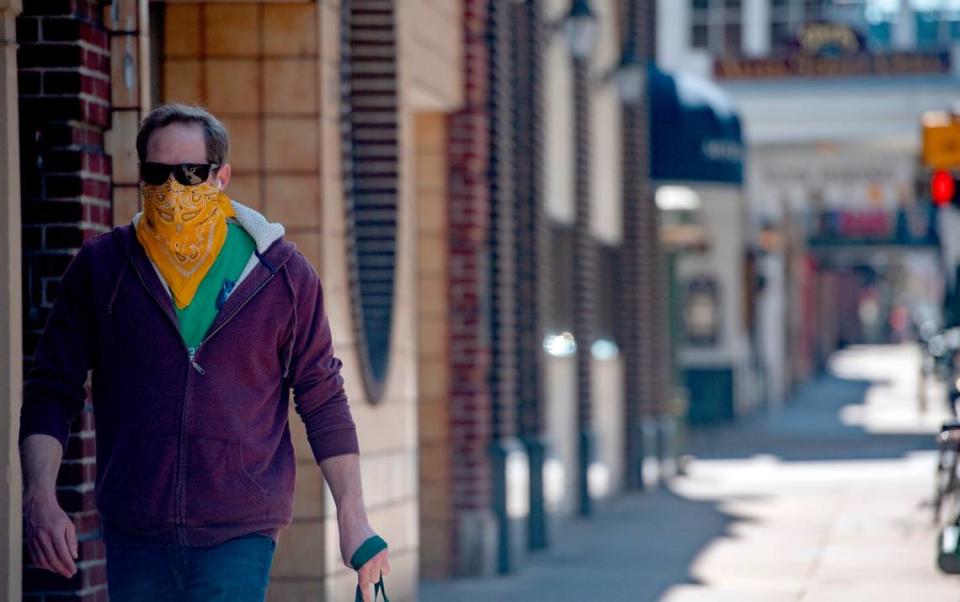Using a bandana as a COVID-19 face mask? You might want to reconsider, video shows
Ever since health officials took a major U-turn on their guidance about face masks during the coronavirus pandemic, urging and sometimes begging the public to wear them, people have unveiled their creative sides.
T-shirts, scarves, coffee filters and even underwear have been found covering the mouths of many across the U.S., but one of those options — bandanas — have proved to be the least effective, according to a study published Tuesday in the journal Physics of Fluids.
In a video, researchers from Florida Atlantic University show how long respiratory droplets from coughs travel and remain suspended in the air with different kinds of face coverings, revealing how ineffective current social distancing guidelines might be.
“The visuals used in our study can help convey to the general public the rationale behind social-distancing guidelines and recommendations for using face masks,” Dr. Siddhartha Verma, lead author and an assistant professor in the department of ocean and mechanical engineering, said in a news release. “Promoting widespread awareness of effective preventive measures is crucial at this time as we are observing significant spikes in cases of COVID-19 infections in many states.”
The researchers recreated a person’s nasal passages inside a mannequin head that stood over 5 feet tall, and “delivered” coughs with a manual pump using a smoke machine, according to the study. A sheet of laser light made the fake droplets appear in a green color once expelled from the mannequin’s mouth, the video shows.
The team from FAU’s College of Engineering and Computer Science tested a single-layer “bandana-style covering,” a homemade two-layered cotton mask and a “cone-style mask that is available in most pharmacies,” a news release said.
Without any covering at all, coughs expelled droplets up to 12 feet in under a minute, but most of them had fallen to the ground by that point, the researchers said, but still they traveled “farther than the currently recommended 6-foot distancing guideline.”
They also floated in the air for up to three minutes in a non-windy environment, the researchers found.
Droplets traveled about 2.5 inches with a homemade cotton mask — similar to those the Centers for Disease Control and Prevention recommend — about 8 inches with the cone-style mask and a little over a foot with a folded cotton handkerchief, according to the study.
But with a bandana, the cough traveled about 3 feet 7 inches — the worst of them all aside from no mask — even though the material had the highest thread count compared to the other coverings, the researchers said.

This demonstrated that higher thread count does not automatically mean a mask is more effective.
All of the face coverings tested blocked the speed and range of the “respiratory jets” to some degree, but some droplets still escape from them all either through the material or from gaps along the edges, according to the researchers.
“Importantly, both the number and concentration of the droplets will decrease with increasing distance, which is the fundamental rationale behind social-distancing,” study co-author Dr. Manhar Dhanak, department chair, professor, and director of SeaTech at FAU, said in the news release.
However, the researchers did not measure the number and size of the fake droplets, Linsey Marr, an engineering professor at Virginia Tech, told CNN.
“These types of experiments are useful to help visualize how droplets travel in air and how effective masks can be, especially for the general public,” Marr told the outlet. “However, we need to supplement these types of experiments with rigorous, quantitative studies that can tell us how well different masks work, especially for the sizes of droplets that are not evident with the methods used here.”

